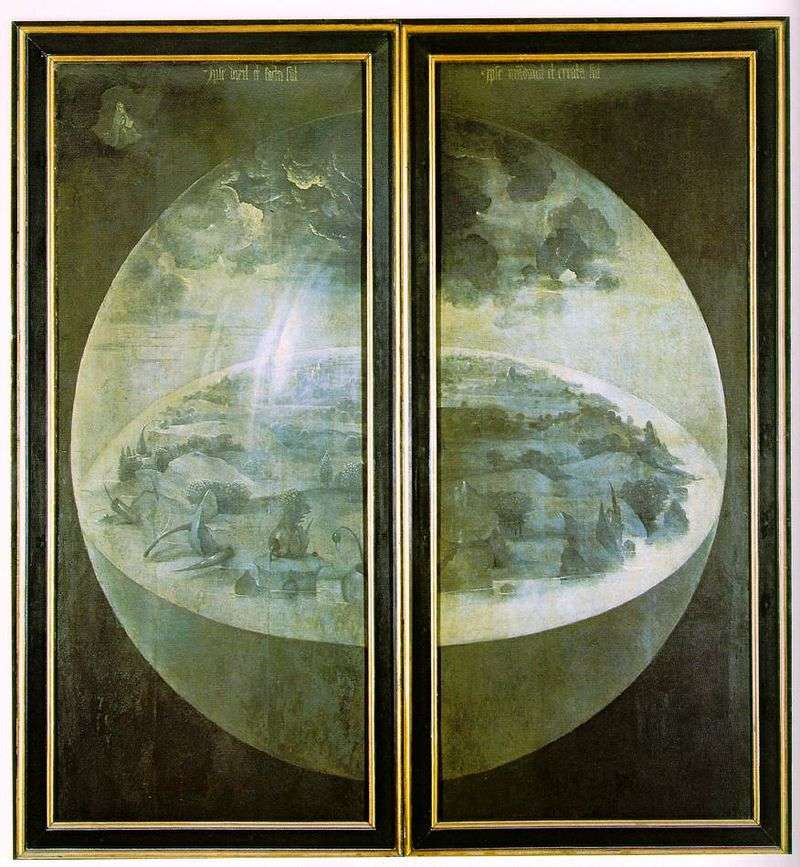
External leaves “Creation of the World” of the altar “Garden of earthly pleasures”. Bosch depicts here the third day of creation: the creation of a land, flat and round, washed by the sea and placed in a giant sphere. In addition, the newly emerged vegetation is depicted. There is evidence that Bosch also wrote the fifth day of creation: the creation on earth of the animal world – on the back of the shutters of the main altar in the Hertogenbosch. The composition in question is the first pure landscape in the history of Dutch painting.
This rare, if not unique, story shows the depth and power of Bosch’s imagination. On the technique of painting Hieronymus Bosch. Contemporaries Bosch led in admiration for his picturesque technique. Against the backdrop of the dry painting of most Flemish and Dutch artists of the time, with their annoying draperies and obsessive anatomy, his paintings look alive and dynamic, the colors are juicy, and the smear that comes down from the first time, so often remain in sight preliminary notes – lively and expressive.
On the wooden surface treated with a layer of translucent pinkish varnish on top of the ground base, the color becomes shiny and transparent, plays pink and purple hues in the vicinity of celestial blue, yellow, jade green, brown, flashes orange, carmine, sulfur yellow in the glow of fires and dissolves in a complex range of light curtains in amazing landscapes. Sometimes it becomes almost “impressionistic”, thickening in the finest zigzags and flickering veins, obtained from the touch of a brush with white paint.
In the works of the last period, color, on the contrary, loosely lies on a flat surface, forming expressive contrasts. The problem of space is also solved by Bosch surprisingly original. If in early works he more or less adheres to the traditional perspective, then in large phantasmagoria of the mature period he invents new technique. Bosch creates some kind of indefinite space where many moving figures lined up in horizontal or slightly inclined chains form a continuous first plan, contrasted with background episodes, but without any inverse dependence.
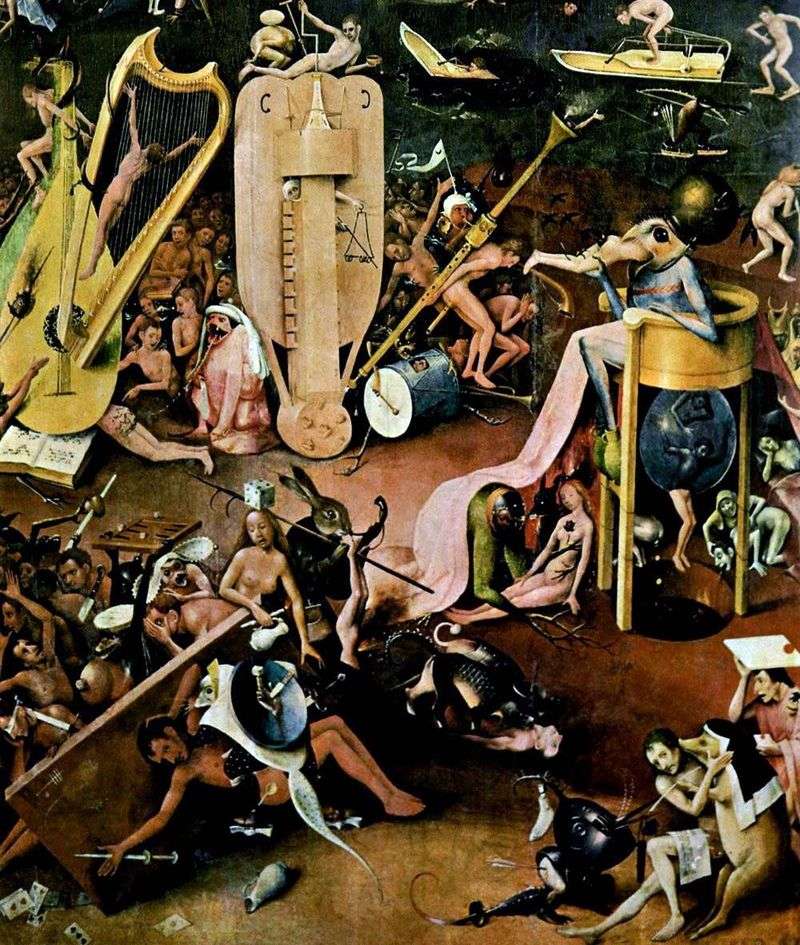 Hell. Detail of the triptych Garden of earthly pleasures by Hieronymus Bosch
Hell. Detail of the triptych Garden of earthly pleasures by Hieronymus Bosch Garden of Earthly Delights by Hieronymus Bosch
Garden of Earthly Delights by Hieronymus Bosch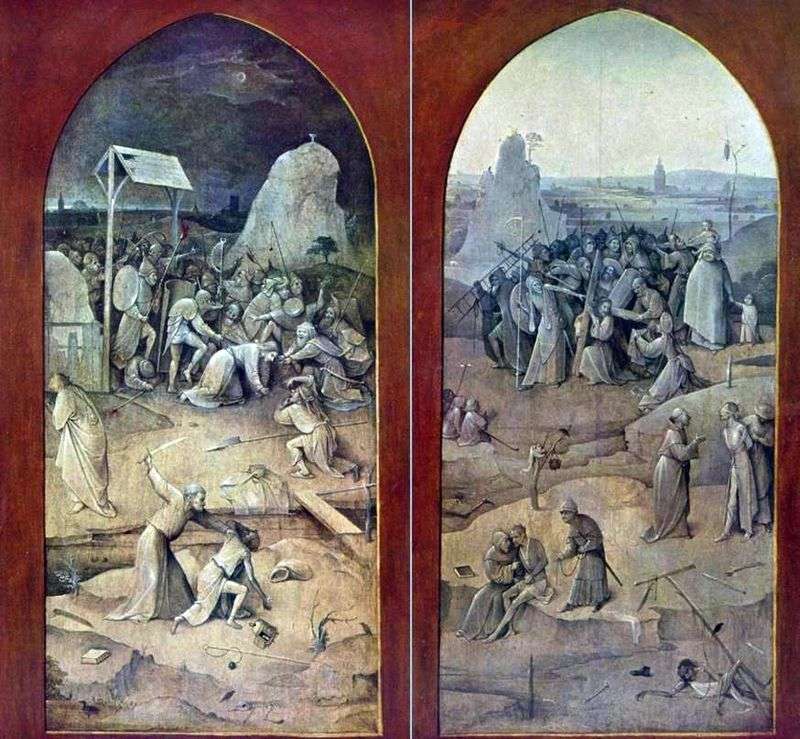 Taking in custody and Carrying the cross. The outer wings of the altar by Hieronymus Bosch
Taking in custody and Carrying the cross. The outer wings of the altar by Hieronymus Bosch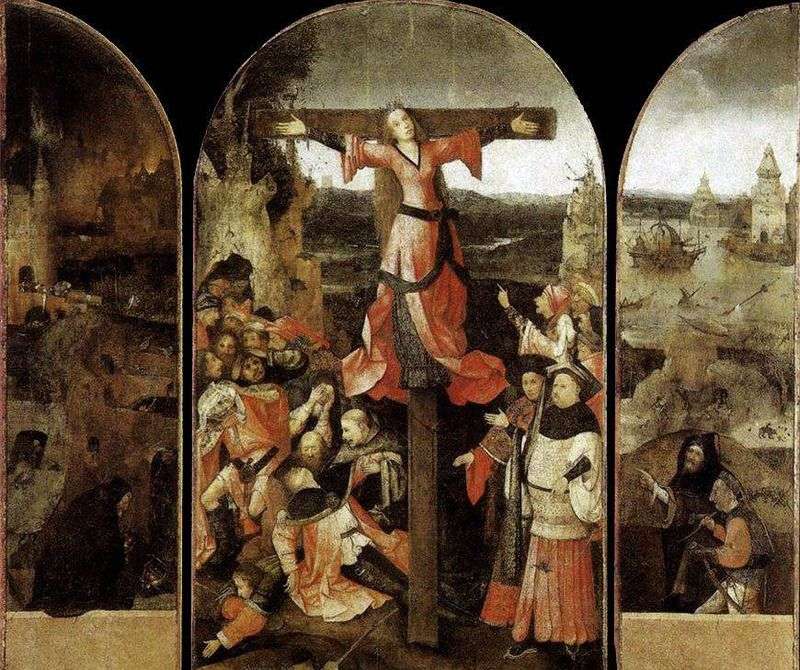 Martyrdom of the Holy Liberty. Triptych by Hieronymus Bosch
Martyrdom of the Holy Liberty. Triptych by Hieronymus Bosch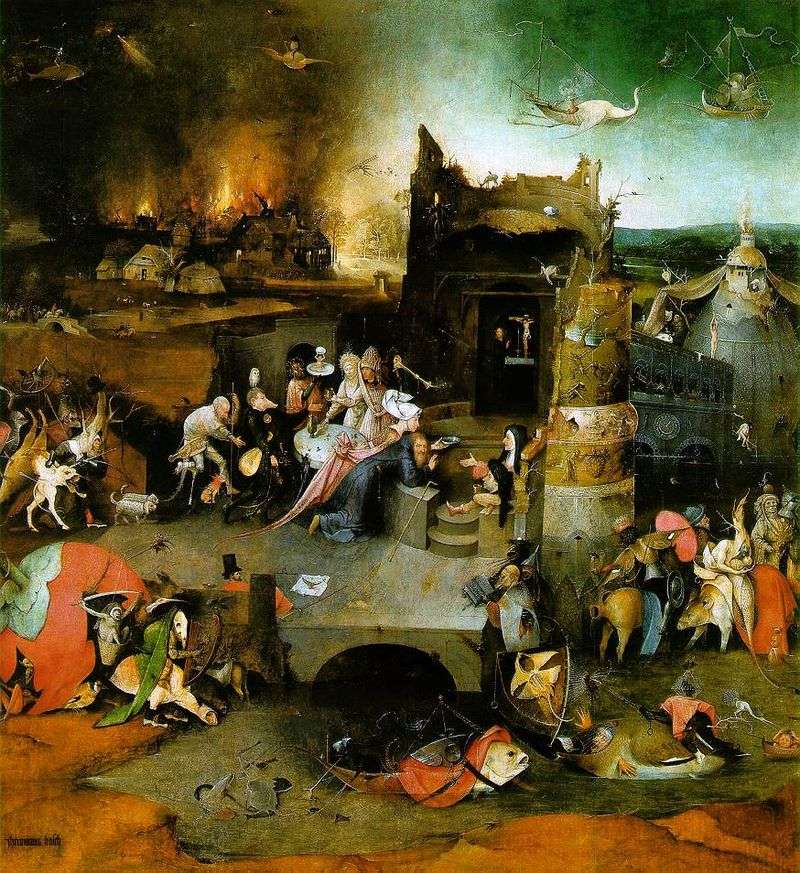 The altar of St. Anthony. The central part of the triptych is Hieronymus Bosch
The altar of St. Anthony. The central part of the triptych is Hieronymus Bosch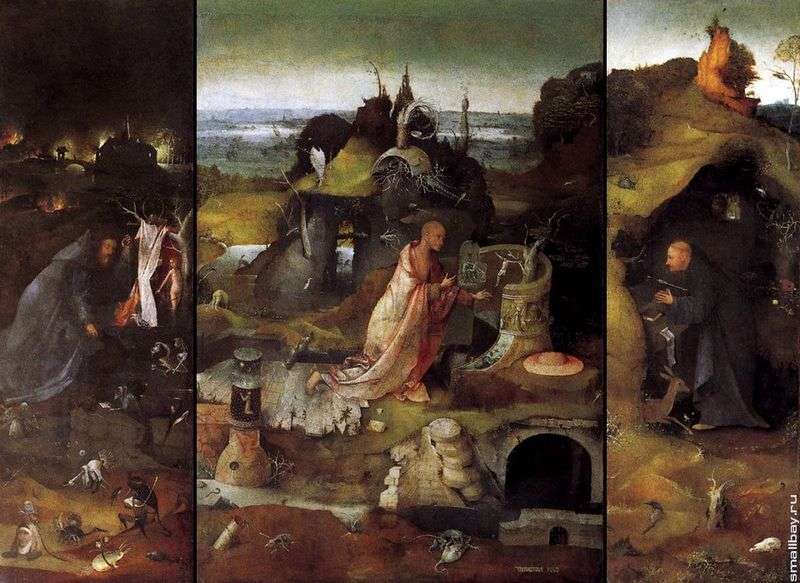 The holy hermits. Triptych by Hieronymus Bosch
The holy hermits. Triptych by Hieronymus Bosch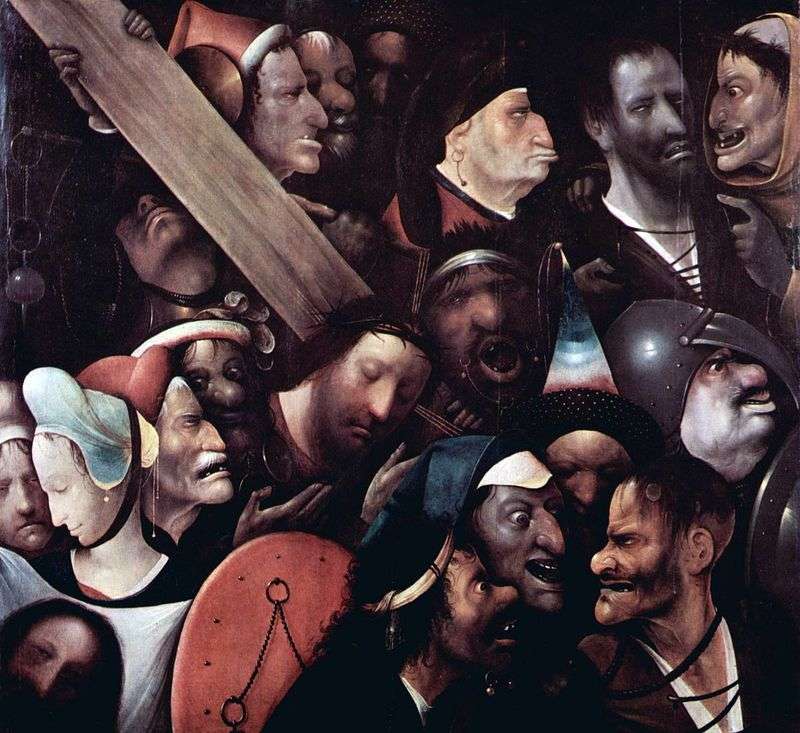 Carrying the cross by Hieronymus Bosch
Carrying the cross by Hieronymus Bosch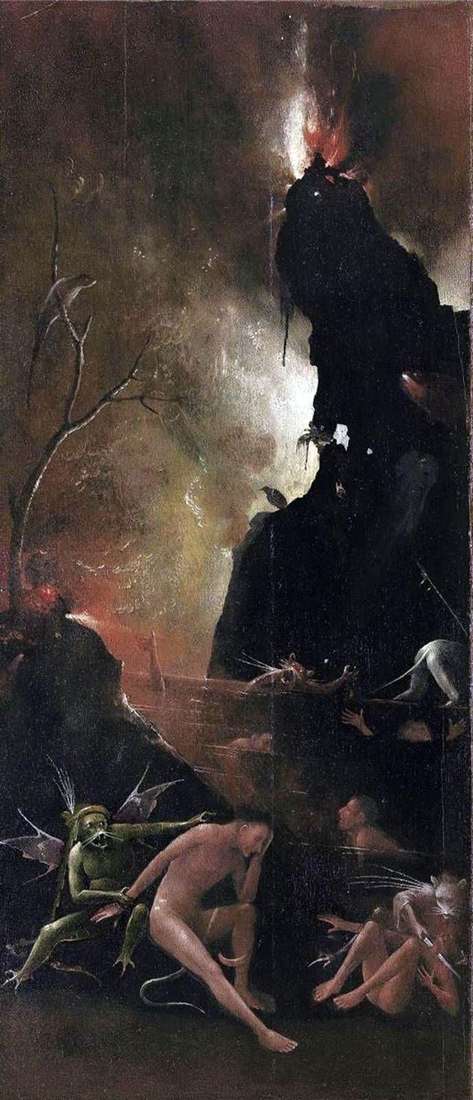 Hell’s River, Visions of the Hereafter by Hieronymus Bosch
Hell’s River, Visions of the Hereafter by Hieronymus Bosch